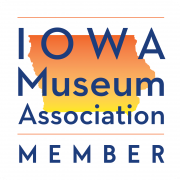Postmodernism (1980s – ) rejected several characteristics of Modernism including art must be hand made by the artist, art is a marketable commodity, and it must be a unique, sustainable object like a sculpture or painting. Post modernism encompassed new forms of expression including video, texts, and performance and use of alternative types of materials such as plastics and concrete.
Conceptual Art was a trend within Postmodernism. Here the artist’s thought process took precedence over everything else (media type, skill, and technique). Part of the art-making process was written text and sometimes the only element of the work.
- Howardena Pindell (1943-) Pindell is a multimedia artist that draws on many sources and diverse narratives. She briefly was an associate curator at MoMA but experienced hostility believed by her to be based on race and gender. This fueled her writing, activism, and art. https://www.howardenapindell.org/
Separate but Equal Genocide: AIDS, 1992 – A 2 part conceptual piece. The red stripe suggests blood, and flags covered with names of AIDS victims. The use of white and black suggests that AIDS does not discriminate even when people do. https://www.artsy.net/artwork/howardena-pindell-separate-but-equal-genocide-aids
Intermedia Art was a method Conceptual artists used such as performance or an installation. A performance is ephemeral and can involve audience participation. Installation art is also temporary. Created for a particular space, can never be viewed the same way twice. The viewer can be immersed in the art by entering it and becoming part of it rather than casually observing.
- Adrian Piper, (1948-) Piper moved to Conceptualism in the mid 1970s and created installations, performances, written and oral texts based mostly on myths of the Black male and white fear of miscegenation. Typically performed outside of traditional museums or galleries and created a direct interaction with viewers.https://www.theartstory.org/artist/piper-adrian/
My Calling Card #1 (For Dinners and Cocktail Parties), performance art accessory, 1986 Piper is biracial and often mistaken for white. Therefore, she is often unwillingly involved in racist conversations. When this occured she would hand calling cards to the offending parties. https://www.wikiart.org/en/adrian-piper/my-calling-card-1-reactive-guerrilla-performance-for-dinners-and-cocktail-parties-1990
- Fred Wilson, (1954-) Wilson critiques traditional museum and gallery installations by manipulating standard museum objects and their spaces showing that context changes create changes in the viewer’s perception. https://art21.org/artist/fred-wilson/
Guarded View, 1991, multi-media
Part of a larger work entitled “Mining the Museum” at the Maryland Historical Society. https://whitney.org/collection/works/11433
https://marabouatthemuseum.com/2019/01/30/fred-wilsons-guarded-view-and-my-life-as-a-dog/
- Carrie Mae Weems,(1953-) Weems is a photographer, multimedia, and installation artist. She shows Black subjects with the intention that to better understand the present, you have to investigate the past. Weems also focuses on Black cultural identity. https://www.moma.org/artists/7177
From Here I Saw what Happened and I Cried, 1995 Redefining and humanizing archeological daguerreotypes taken of African slaves in 1850. https://www.moma.org/collection/works/45579



